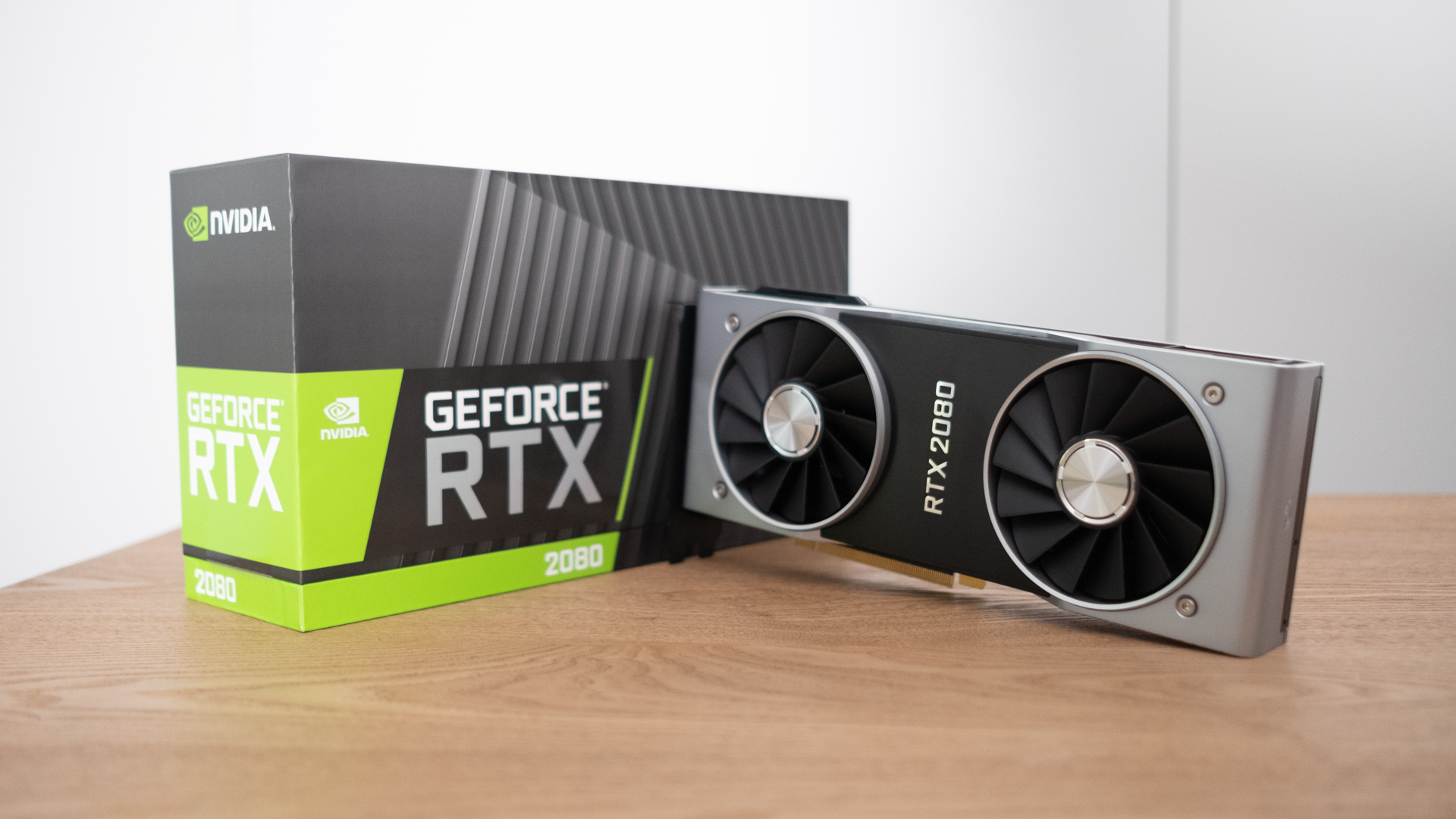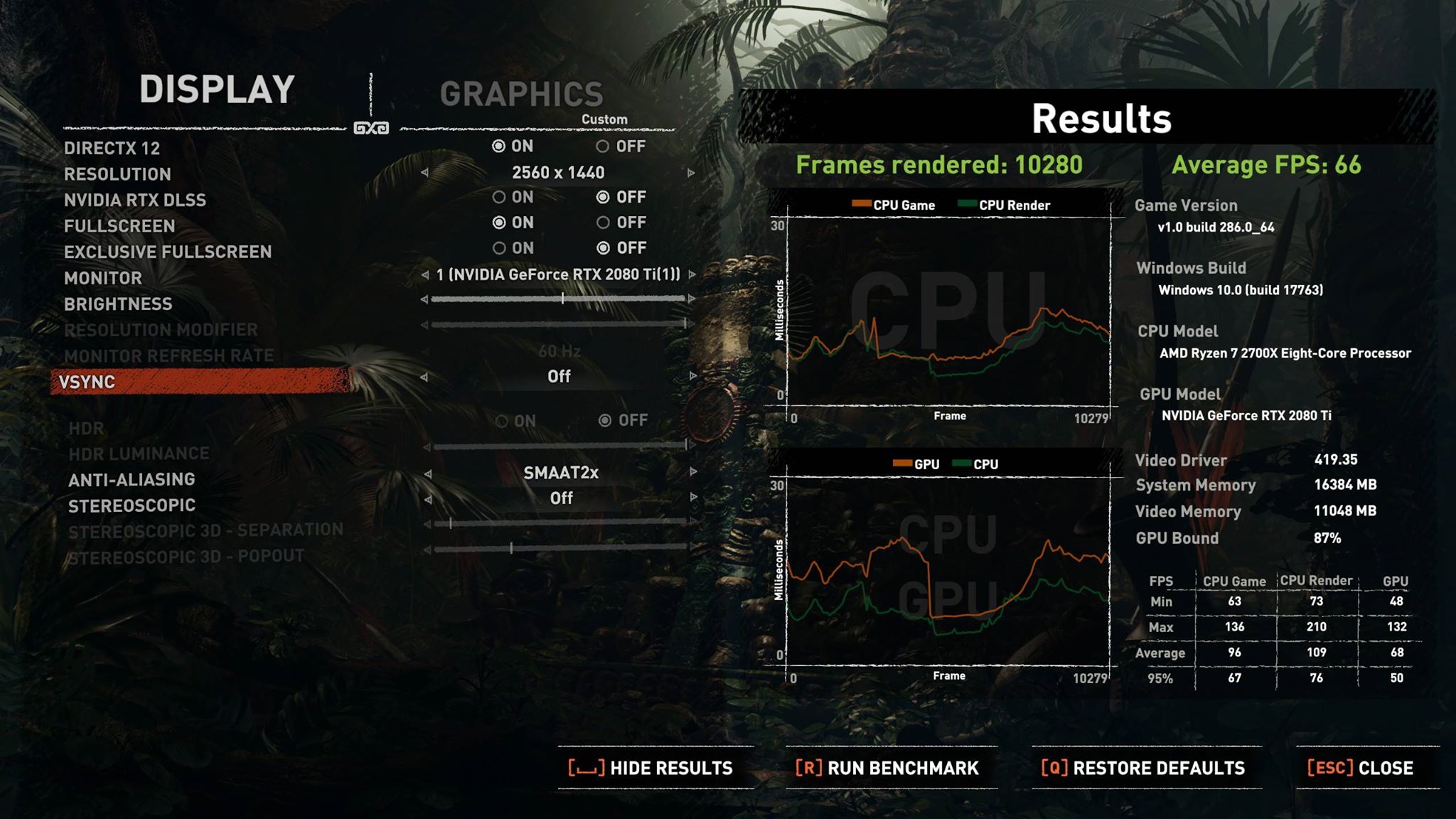Accelero Xtreme Iv Rtx 2080 Ti
Nvidia GeForce RTX 2080 Ti vs RTX 2080: which should yous buy?

The Nvidia GeForce RTX 2080 Ti and RTX 2080 are yet in their infancy, bringing about out-of-this-world PC gaming functioning. Finally, 4K 60 frames-per-2d (fps) gaming is attainable on a single card without having to compromise on visual quality – who wants to run their games on medium, anyway?
However, now that the dust has settled and users have had these cards in their systems for a while, it'southward time to put the RTX 2080 and the RTX 2080 Ti caput to caput to encounter which carte makes the well-nigh sense for your system.
Now, we know that when it comes to sheer horsepower, the Nvidia RTX 2080 Ti is going to absolutely dominate, but that's not the only cistron – regardless of what some people may take you believe. Cost, functioning and target resolution are all key factors, along with the kinds of games y'all play. And then, allow's swoop into the nitty-gritty.

Cost
Ane of the most notable things about the Nvidia Turing line of graphics cards is just how expensive they are over the previous generation. If y'all're on the market for an upgrade, you're looking at dropping at least $499 (about £380, AU$700) on the RTX 2070 – which is much weaker than either of the cards we're paying attention to today.
If you want all the possible performance with nothing compromises, you'll take to driblet at to the lowest degree $one,199 (£i,099, AU$one,899) for the RTX 2080 Ti. This is a huge jump over the previous generations GTX 1080 Ti, which launched at $699 (£699, AU$1,129).
If that's too rich for your blood – and, really, we can't blame you – you might notice the Nvidia GeForce RTX 2080 more palatable, which starts at $799 (£749, AU$1,299). This is nonetheless an expensive menu, but, hey, it's under a grand and that'due south something. Unfortunately, neither of these cards are very budget-friendly, so it'south simply a matter of how much you're willing to fork over for the all-time graphics card.
Specs
In terms of raw specs, the Nvidia GeForce RTX 2080 comes with 8GB of GDDR6 VRAM with a speed of 14Gbps on a 256-scrap omnibus. It has a base clock of i,515MHz and a boost of 1,710MHz and ii,944 CUDA cores.
The RTX 2080 Ti, on the other hand, has a whopping 11GB of GDDR6 VRAM at the same 14Gbps, but on a 352-chip coach. Its clocks are a fleck slower at one,350MHz and one,545MHz, respectively. However, information technology features way more CUDA cores, coming in at 4,352.
But going off of these numbers alone, it's not hard to figure out that the RTX 2080 Ti is a beefier card, but the RTX 2080 is no slouch, either. Both cards should be able to handle gaming at high resolutions, but how well does each actually cope?
Performance
This is where things become fun. Nosotros've been using the RTX 2080 Ti to play all the best PC games over the final couple weeks, and when combined with ane of the best gaming monitors like the AOC Agon AG352UCG6 Black Edition or the Asus ROG Swift PG27UQ, you lot're in for quite an amazing experience. Both of these cards will provide high frame rates, even at 4K, though non at quite the aforementioned levels.
In our suite of synthetic benchmark tests, the Nvidia GeForce RTX 2080 Ti was able to score 12,123 points in 3DMark Time Spy and 25,039 in Firestrike. The RTX 2080, in the same tests, accomplished 10,139 and 22,027, respectively.
In existent-globe operation, the performance gap is a piffling more pronounced, specially at 4K. In Shadow of the Tomb Raider, the RTX 2080 Ti almost hit 60 fps at Ultra settings at 4K, scoring an boilerplate of 58. In Middle Earth: Shadow of War, as well at 4K Ultra, scored a respectable 74 fps average, then in Full War: Warhammer Ii, it accomplished 46 frames – which is impressive given how tough that game is to run.
As for the RTX 2080, with the same settings and resolution, information technology scored 45 fps in Shadow of the Tomb Raider, 59 fps in Middle World: Shadow of State of war and 37 in Total War: Warhammer 2.
And so, while the RTX 2080 Ti is manifestly the performance king, the RTX 2080 is no slouch, either – even in the most enervating games at 4K. Then, if y'all're running a lower-res monitor, say two,560 ten 1,440, yous actually tin't become incorrect with either of these cards – yous're going to get killer frame rates at high settings either way.

RTX on
When Nvidia announced its Turing lineup, it made a huge bargain out of two features – ray tracing and deep learning supersampling (DLSS). The Turing architecture has ii dedicated cores for these features – Tensor cores for DLSS and RT cores that facilitate real-time ray-tracing.
Every bit crawly as these features sound, they aren't bachelor in many games nevertheless. That's right, even months after Turing'south initial September 27th release in that location are only a few games that offer real-time ray tracing or DLSS.
Right now, real time ray tracing is only available in three games: Metro Exodus, Shadow of the Tomb Raider and Battlefield V. However, the effects in each of the games are different, you have ray traced global illumination in Metro Exodus, ray traced shadows in Shadow of the Tomb Raider, and ray traced reflections in Battleground V. These all enhance image quality, but will obviously lower performance.
We tested Metro Exodus and Shadow of the Tomb Raider on an RTX 2080 Ti at 1440p. In Metro Exodus, before we turned on any RTX features, nosotros averaged 104 fps. But, when we turned the ray traced global illumination on Ultra settings, that dropped down to threescore fps – that'southward a massive driblet in performance. Though, DLSS softened that blow, granting us a 73 fps average.
In Shadow of the Tomb Raider, we got an average of 93 fps without any RTX features at 1440p, and with ray traced shadows that dropped downwardly to 66 fps.
Now, evidently, these results are from the most powerful consumer graphics card on the marketplace, simply with the RTX 2080, yous can wait a similar operation drop, losing about 20-thirty%. Both graphics cards can handle ray tracing, though the 2080 Ti is apparently more apt.

Which graphics card should you buy?
Everything comes downwards to what games you lot want to play and at what resolution. If you're looking to play all the latest AAA games at 4K 60 fps without compromising on quality, you might want to go for the RTX 2080 Ti, fifty-fifty if the price is difficult to swallow.
But, if yous're looking for QHD gaming, maybe at a high refresh charge per unit, the RTX 2080 is going to work but fine. Yous're going to be able to max out games at that resolution without needing to fork over more than a thousand bucks.
No matter which option you go for, y'all're getting stellar performance, it's just a question of how much coin you're comfortable spending. Plus, you can always sell your old graphics carte du jour to endeavour and soften the financial blow.
- These are the best graphics cards nosotros've tested recently
Source: https://www.techradar.com/sg/news/nvidia-geforce-rtx-2080-ti-vs-rtx-2080-which-should-you-buy
Posted by: troupeingthe.blogspot.com

0 Response to "Accelero Xtreme Iv Rtx 2080 Ti"
Post a Comment